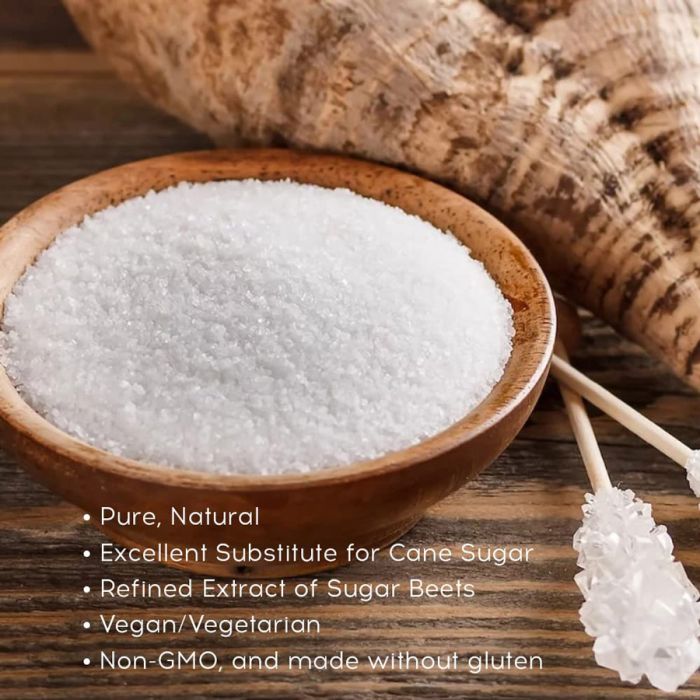Many baking guides specify either beet sugar vs cane sugar, depending on the intended outcome.
Many baking guides specify either beet sugar vs cane sugar, depending on the intended outcome.
Blog Article
Discover the Uses and Advantages of Beet Sugar Vs Cane Sugar in Your Daily Diet Regimen
Checking out the distinct high qualities of beet and cane sugar discloses more than just their sweetening abilities; it highlights their distinct influences on health and cookeries. Beet sugar, understood for its refined flavor, is frequently favored in fragile treats, whereas cane sugar, with its tip of molasses, adds splendor to robust dishes. Each kind holds its very own nutritional account and glycemic ramifications, welcoming a deeper understanding of their functions in a balanced diet and lasting intake practices.
Beginning and Manufacturing Processes of Beet and Cane Sugar

The unique climates and dirt types required for expanding sugar beets and sugarcane add to distinctions in their cultivation techniques and geographical distribution, influencing the business economics and sustainability of their manufacturing. beet sugar vs cane sugar.
Nutritional Comparison Between Beet Sugar and Cane Sugar
Regardless of stemming from various plants, beet sugar and cane sugar are nutritionally really similar, both primarily including sucrose. Each gives about 4 calories per gram, converting to approximately 16 calories per teaspoon. Structurally, both sugars are composed of roughly 99.95% sucrose, with marginal quantities of other compounds like moisture and trace element, which do not dramatically modify their nutritional accounts.

Ultimately, when selecting in between beet sugar and cane sugar based upon dietary material alone, both deal similar benefits and downsides as they are basically kinds of the exact same molecule-- sucrose, supplying quick energy without other look at here now nutrients.
Influence On Health: Glycemic Index and Caloric Material
Checking out further right into the effects of beet sugar and cane sugar on health, it is essential to click here to read consider their glycemic index and calorie content. The glycemic index (GI) of both beet and cane sugar is around 65, categorizing them as high-GI foods, which can create fast spikes in blood sugar levels.
Each type of sugar includes about 4 calories per gram, making their caloric content equivalent. For those keeping track of caloric intake, particularly when handling weight or metabolic health and wellness problems, understanding this equivalence is important (beet sugar vs cane sugar). Nevertheless, excessive consumption of any type of high-calorie, high-GI food can add to health and wellness problems such as excessive weight, heart problem, and insulin resistance.
Environmental and Economic Considerations of Sugar Manufacturing
Beyond health influences, the production of beet and cane sugar likewise increases considerable environmental and financial worries. Sugar beet farming has a tendency to call for cooler environments and has a reduced geographical footprint contrasted to sugar cane, which grows in exotic regions.
In addition, making use of chemicals and fertilizers in both beet and cane sugar growing can lead to soil deterioration and contamination, additional affecting biodiversity and local water bodies (beet sugar vs cane sugar). The option between cultivating sugar beet or cane commonly depends upon local ecological problems and financial factors, making the sustainability of sugar manufacturing an intricate problem
Culinary Applications and Flavor Differences
While the environmental and economic elements of sugar production are certainly substantial, the selection between beet and cane sugar likewise affects culinary applications and flavor accounts. Beet sugar, derived from the sugar beet plant, is recognized for its extremely neutral taste.
Walking stick sugar, removed from article source sugarcane, usually maintains molasses traces, which give a distinct richness and deepness. The slight variation in moisture web content between beet and cane sugar can affect the structure and consistency of recipes, making cane sugar a preferred selection for certain recipes that profit from its distinct homes.

Final Thought
In verdict, both beet and cane sugar have unique beginnings and manufacturing processes, offering comparable nutritional accounts with small differences in salt web content and flavor. While their effect on health, specifically regarding glycemic index and calories, is comparable, the choice in between them often steams down to environmental, financial factors, and particular culinary requirements. Comprehending these elements can guide consumers in making informed decisions that line up with their wellness objectives and taste choices.
Report this page